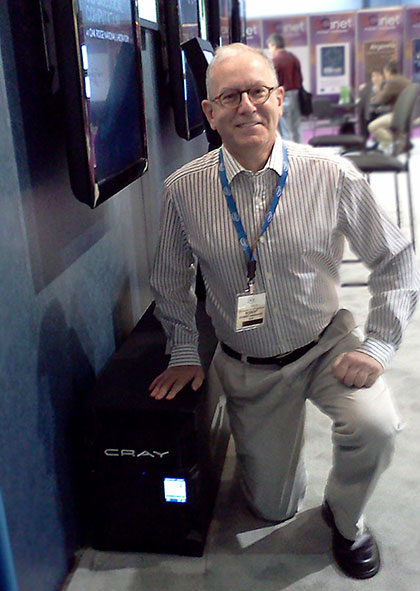 The HPC community lost one of its own this week. Dr. Robert P. Harkness, a computational astrophysicist with the San Diego Supercomputer Center (SDSC), died on Sunday, January 27, after a brief bout with cancer. He was 56.
The HPC community lost one of its own this week. Dr. Robert P. Harkness, a computational astrophysicist with the San Diego Supercomputer Center (SDSC), died on Sunday, January 27, after a brief bout with cancer. He was 56.
Harkness joined SDSC in 2001 as a member of SDSC’s Laboratory for Computational Astrophysics. With a total of more than 30 years’ experience in computational science and high-performance computing, he focused much of his research on the dynamics of exploding stars (novae and supernovae), but also specialized in writing new applications that allowed researchers worldwide to perform ever-larger computer simulations. A native of the United Kingdom, Harkness received his D. Phil at Oxford University in 1981.
Robert’s extensive experience, knowledge, and eagerness to push the technological boundaries made him a stalwart of the entire high-performance computing community, not just SDSC,” said SDSC Director Michael Norman, Harkness’ colleague and head of SDSC’s Laboratory for Computational Astrophysics. “As one of the first researchers to use each new system as it came online, he ‘stress tested’ every major supercomputer, and ultimately, every supercomputer center in the U.S. benefited from his contributions. He was instrumental in the push from terascale to petascale computing, and was what I would call a supercomputer power-user – always climbing the power curve for Moore’s Law and massive parallelism.”
During the last two years, Harkness divided his research time between SDSC and the National Institute for Computational Science (NICS) at Oak Ridge National Laboratory in Tennessee, where he was working on advanced application development targeting prototype hardware for the Intel Xeon Phi coprocessor.
A series of videos describing Harkness’ research and computer simulations can be viewed here at insideHPC. Read the Full Story.



